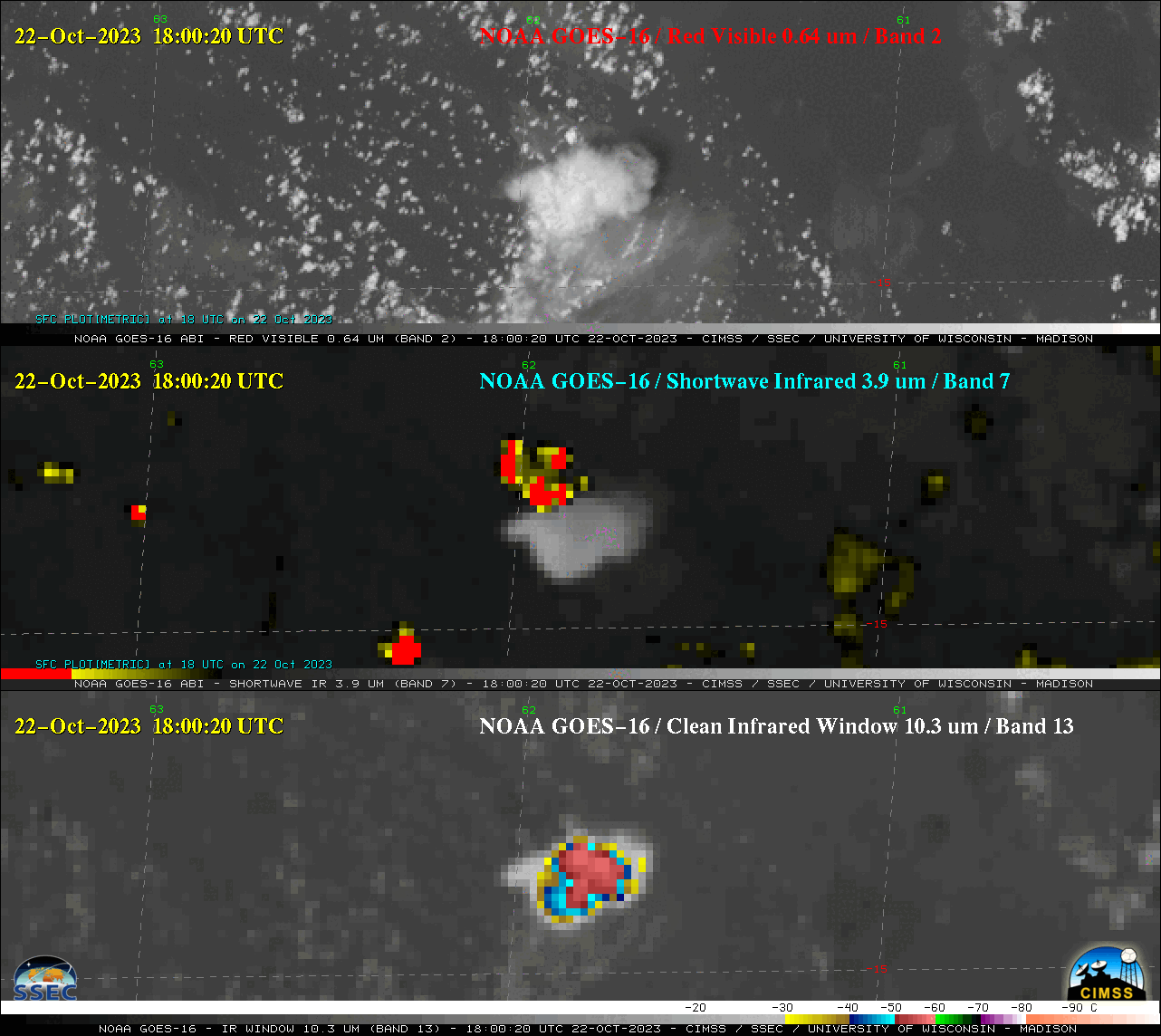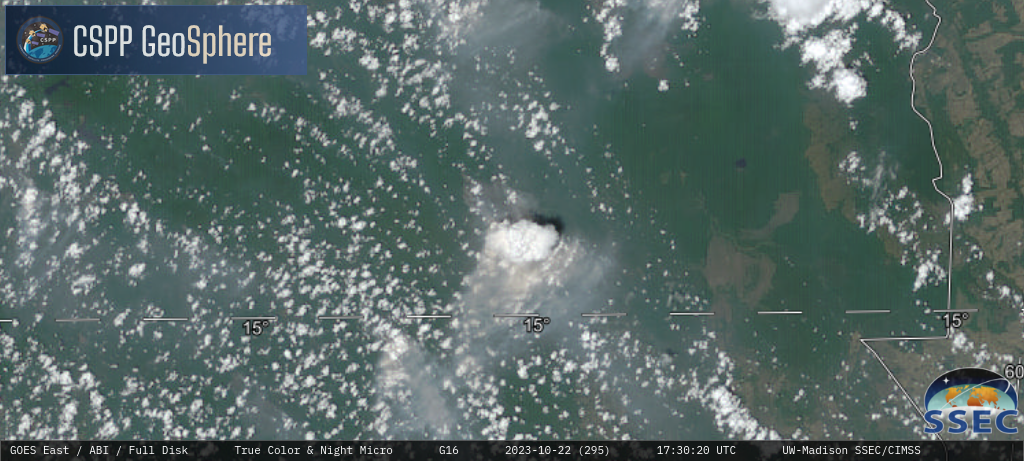Pyrocumulonimbus clouds in Bolivia

GOES-16 “Red” Visible (0.64 µm, top), Shortwave Infrared (3.9 µm, middle) and “Clean” Infrared Window (10.3 µm, bottom) images [click to play animated GIF | MP4]
GOES-16 daytime True Color RGB and Nighttime Microphysics RGB images from the CSPP GeoSphere site (below) revealed a morning smoke plume drifting south-southeastward away from the fire burn scar (it is unclear whether this was a wildfire, or an intentional fire meant to clear trees for agricultural purposes) a few hours prior to pyroCb formation.
This is likely the third confirmed case of a South American pyroCb (the first being on 29 January 2018, and the second on 18 August 2019) — in addition, it’s one of the very few pyroCb events documented so far in the tropics.

